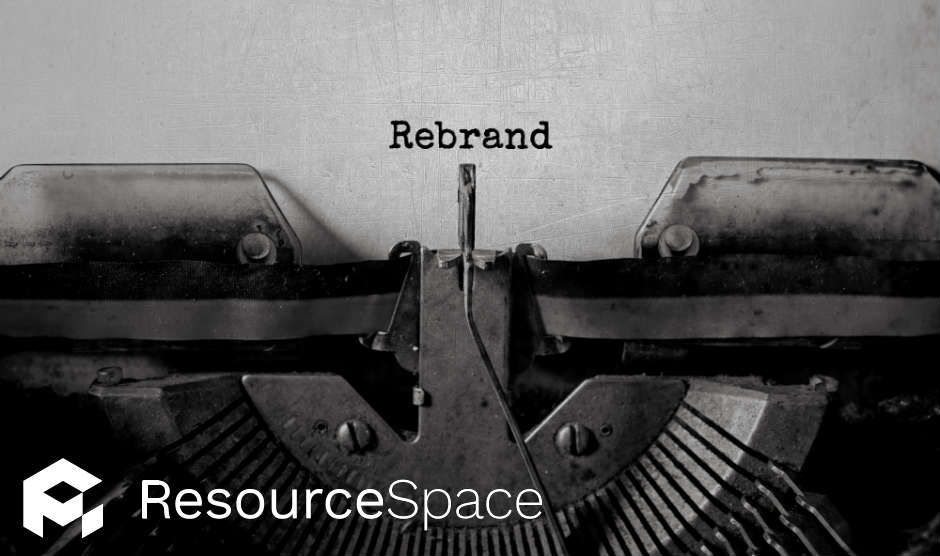
ResourceSpace has changed the way the DEC uses content, making it much easier for us to quickly make assets available both internally and externally during our emergency appeals.
Blog
11th December 2019

A rebrand can be as stressful as it is exciting. On the one hand, you're reinvigorating the look and feel of the business, on the other, there are many legacy digital (and physical) assets that need to be identified and replaced without compromising your organisation and its processes.
To make sure your new visual concepts are adopted properly, you need to have a good understanding of what the original branding represented and how you can incorporate that into the new designs. Here are some of the key points to consider:
Think about the core concepts behind your current brand and what they represent to your customers and the broader market.
Branding is about defining your identity as a business and using that to build strong relationships with your customers. It's essential to understand what they want and to make sure your branding resonates with them and is tuned into their perception of your business.
Find out what your brand is doing right, and what you could tweak to bring it in line with the message you're trying to convey. Differentiating your brand from competitors is another key focus area at this stage - look into how you can make more of an impact with your new branding.
Start by brainstorming ideas with your team. Make sure your concepts are in line with the organisation's mission. Then you can roll these ideas out to consumer focus groups and reshape your plan accordingly.
Core areas to research:
If you're rebranding in order to enter a new market (or a new geographic location), you'll also have to explore the legal implications of your imagery and how your brand translates on a cultural and tactical level in the region you're targeting. This kind of rebrand will require even more strategy and the assistance of local experts who will be able to point out any pitfalls which you might not be aware of.
You'll be surprised by how much interest internal stakeholders suddenly start showing in the rebrand just as you're coming to the end of the planning and design process. To avoid any friction and last-minute resistance, make sure they know how to provide feedback right from the start.
Start by sharing the key objectives of the rebrand, the timescale and budget with all the relevant decision-makers in your business. Make sure that all your ideas are backed by research and clearly demonstrate how you are making an effort to improve your competitive positioning.
Document your plans and proposals and make them accessible to everyone who'll have some kind of input into the project. This ensures that at the end of the process everyone has been kept up-to-date with progress and avoids any last minute resistance.
Your brand guidelines are the cornerstone to effectively initiating your rebrand. This document should make the following points clear:
Once you've decided how all of these elements will change or translate into the new vision for the brand, you should update your brand guidelines.
Depending on the size of your organisation, the rebrand could be a lengthy process because you have to identify all the places your branding visuals are currently applied. Then you have to take a proactive approach to swapping those out for the new branding in order to avoid sending out mixed messages to your clients and partners. Your branded collateral could be very extensive:
These are just some of the things you'll have to add to your list. Each business will have their own unique set of branded assets that need to be taken into consideration and updated when the rebrand kicks in.
A rebrand is the perfect time to address how you store and distribute digital assets throughout your organisation. If your branding efforts have suffered due to poor administration in the past, introducing a digital asset management system could significantly improve how your new branded assets get used in the future.
Start by introducing an effective labelling and tagging procedure to help users and content creators locate and store digital assets methodically. This will cut out a significant amount of frustration and time wasted on trying to find missing files.
Brand files can often be bulky, meaning some components of your brand catalogue may have been stored on external hard drives or servers. With ResourceSpace, you can keep everything together in one location, making it easy to share and grant access to the relevant users whenever you need to. ResourceSpace also allows you to keep tabs on version control, create workflows and allow users to preview and download the exact version they require from the Digital Asset Management (DAM) system.
Depending on how in-depth your rebranding is, there may be significant changes that need to be addressed. For example, if your official business name or your domain has changed, you'll have to go through the necessary registration processes and divert traffic from your old domain to your new one. You'll also have to review how your copyrights are affected and update your tax information if necessary.
A successful rebrand is one where careful attention has been paid to each step of the process. It needs to be goal-driven and help to deliver stronger messaging to your customers. It's also essential that the integration of the new digital assets is streamlined so that all stakeholders can easily apply the new branding and keep things consistent.
Why not take a look at our free resource, 'The Complete Guide to Developing Your Brand Guidelines'?
#Rebranding
#BusinessStrategy
#SEO
#InternalCommunication
#StakeholderEngagement
#BestPractice
#IndustryNews